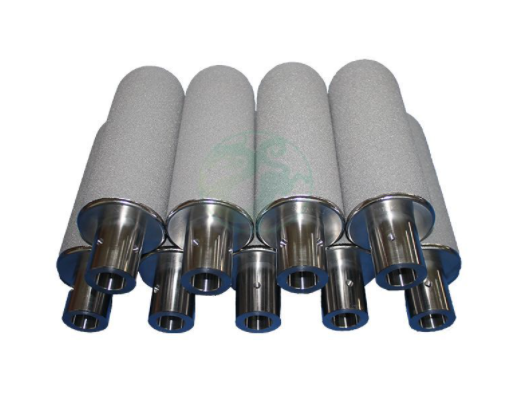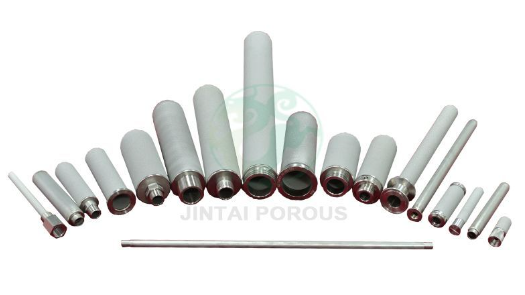Comprehensive Overview: Understanding Sintered Metal Filters
Sintered Porous Metal Filter Element: What is Sintering?
What is Sintering?
Sintering is the process of fusing particles together into one solid mass by using a combination of pressure and heat without melting the materials. Common particles that are sintered together include metal, ceramic, plastic, and other various materials.
The Sintering Process in Metallurgy
The majority of metals can be sintered. Powder sintering is used to increase the strength and structural integrity of metal powders. The sintering process in metallurgy follows the fusing of metal powders, along with other materials such as alloying elements, using heat treatment in a (typically) single, elongated furnace with different temperature zones. The sintering temperature is always below the melting point of the materials to avoid melting.
The sintering process in metallurgy has three stages
Initial Stage:
The first stage of metal powder sintering involves the materials being heated in the furnace at a temperature rate that induces the creation of martensitic, crystalline structures. Complete compaction does not occur because the sintering temperature is not high enough to melt the particles. Consolidating the materials can be accomplished through various means, including using tools to press the materials together or 3D printing lasers which can partially melt powders.
The particles can also be joined by cold welds to give the powder compact enough strength for the rest of the sintering process.
Intermediate Process:
The particle's density increases and they eventually merge. Two common ways to achieve this are transient liquid phase sintering and permanent liquid phase sintering.
If the sintering powder compact involves iron, then the transient liquid phase sintering is used. In this process, copper powder is added to the iron powder. At the regular sintering temperature, copper melts and infuses with the iron, hardening the materials together.
In the permanent liquid phase method, liquid materials such as cemented carbides are added and flow into the open pores and cracks, further binding the materials together.
Final Stage:
By this powder sintering stage, the original sintering powder materials have now become a mostly solid form. In the final stage of permanent liquid phase sintering, more liquid and binder additive flows into any open cracks or pores, successfully binding together the packed mass.
>> Wholesale sintered porous metal filter element
Why Porous Metal?
Filtration systems utilizing sintered metal media for gaseous, solid, and liquid separation have proved to be an efficient alternative to other separation techniques that can risk pressure peaks, heat, and harsh environments. Sintered metal is highly effective in eliminating particulates, provides a reputable efficiency, is easy to clean, and has a long life compared to leaf filters, filter bags, and plate and frame filters.
Solving Your Design and Also Engineering Challenges
Sintered porous metal media is a different material that shows a wide variety of definite flow and filtration properties. The ability to shape it, make it, and manage its porosity make it a versatile material for establishing any particular product or system solutions that include guidelines and also control of liquids as well as gases. Jintai can produce sintered porous metal filter elements of various materials and sizes, and can also be customized according to customer requirements. We select high-quality metal powder as raw materials and cooperate with strict technology to provide customers with high-quality products. Contact us today, and also, let's discuss exactly how we can help you fix your design engineering difficulties with a porous metal media solution.
- Previous: What Are the Different Types of Inconel?
- Next: None




